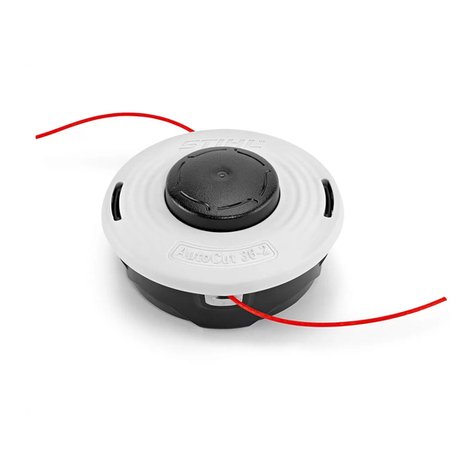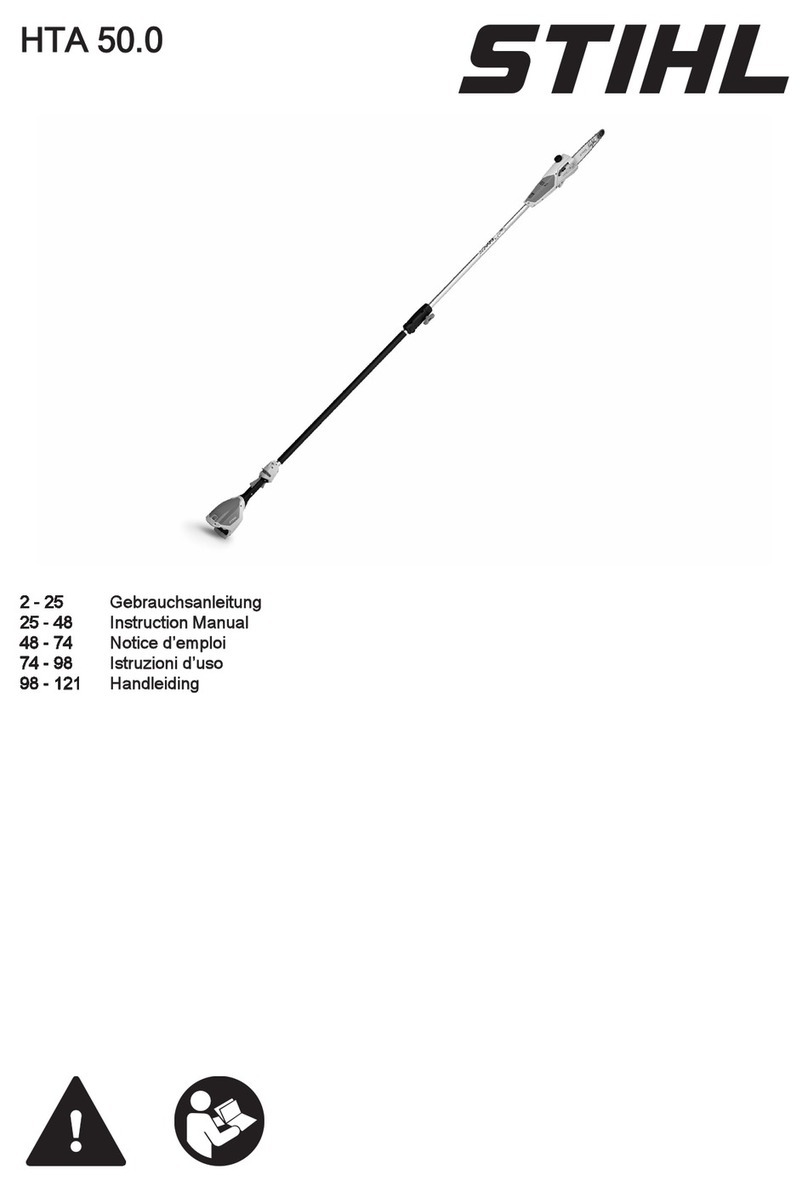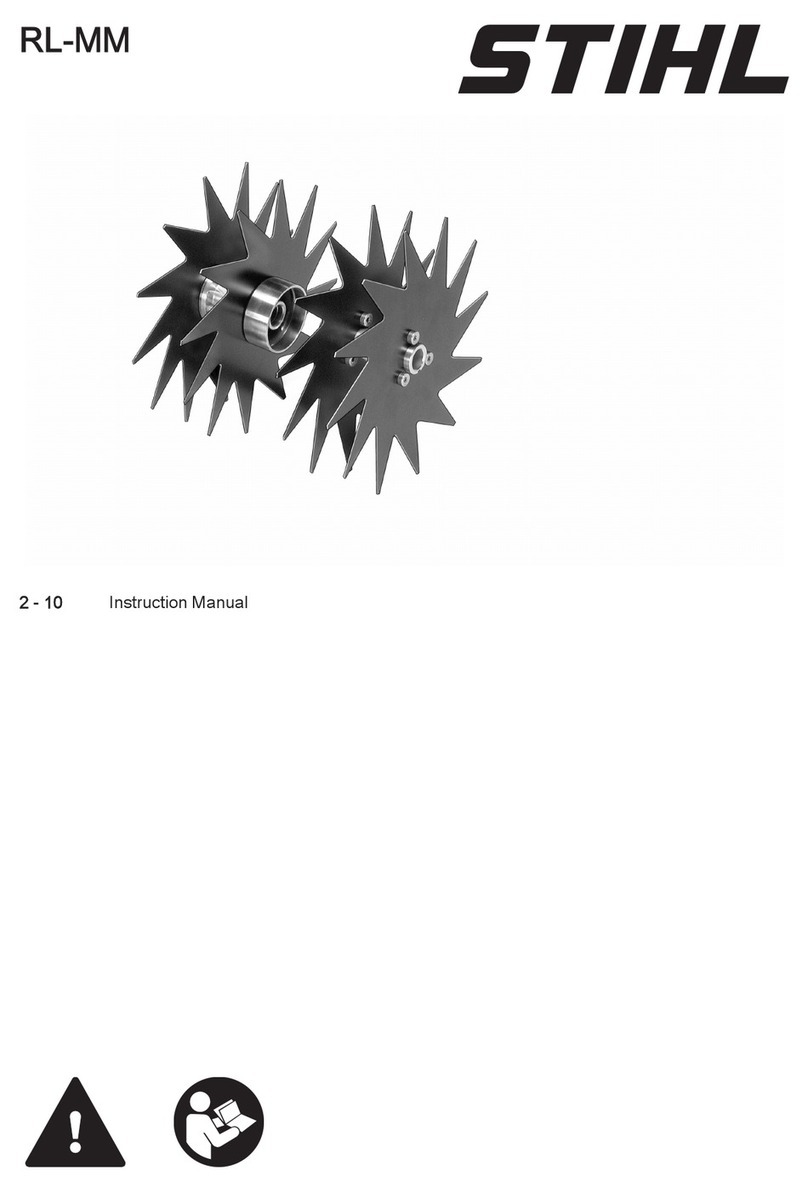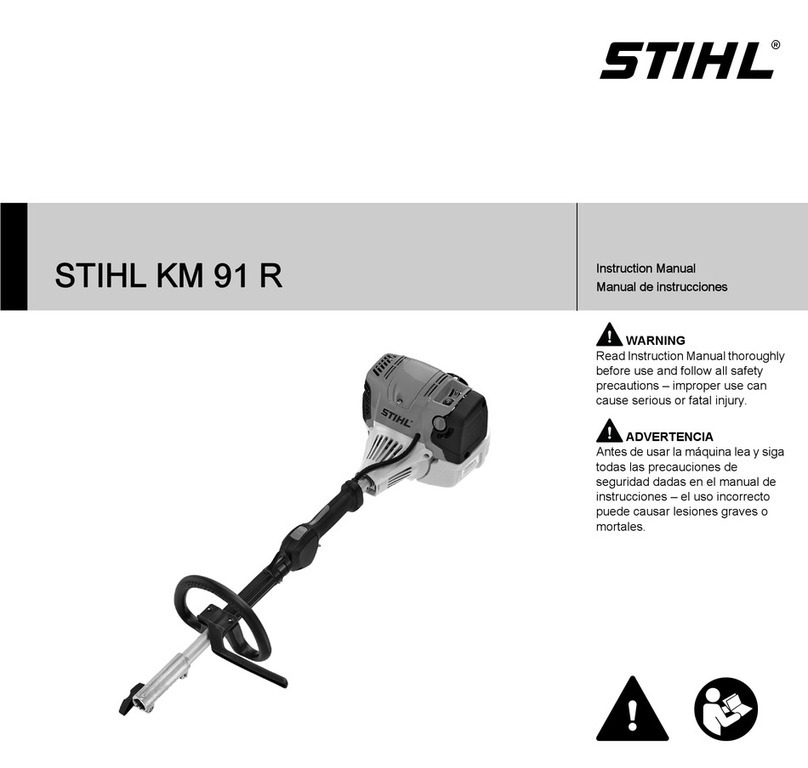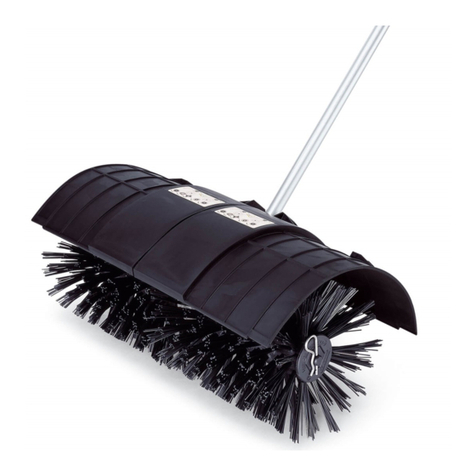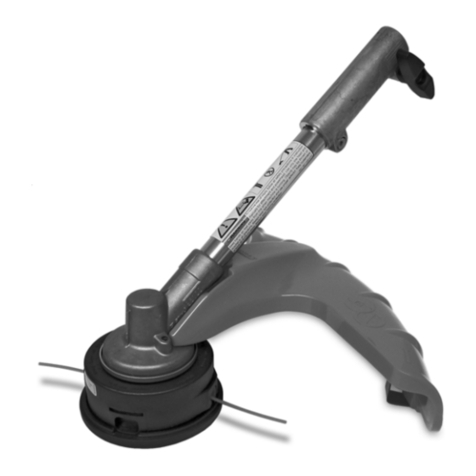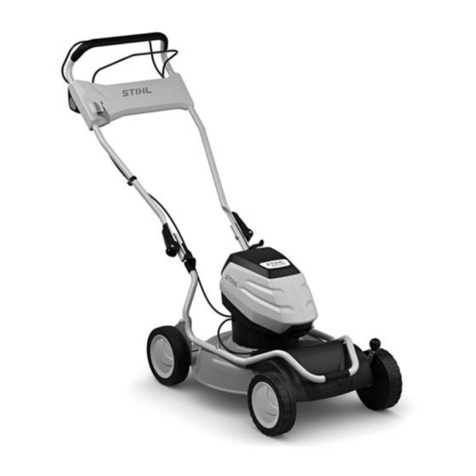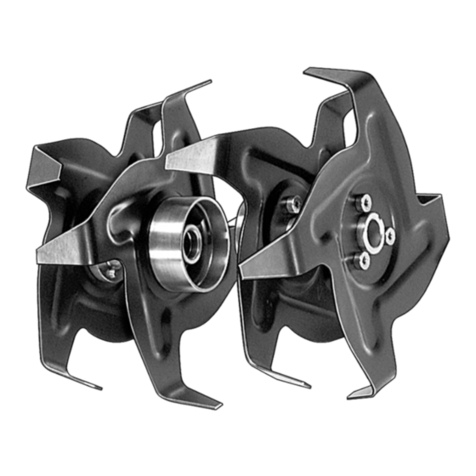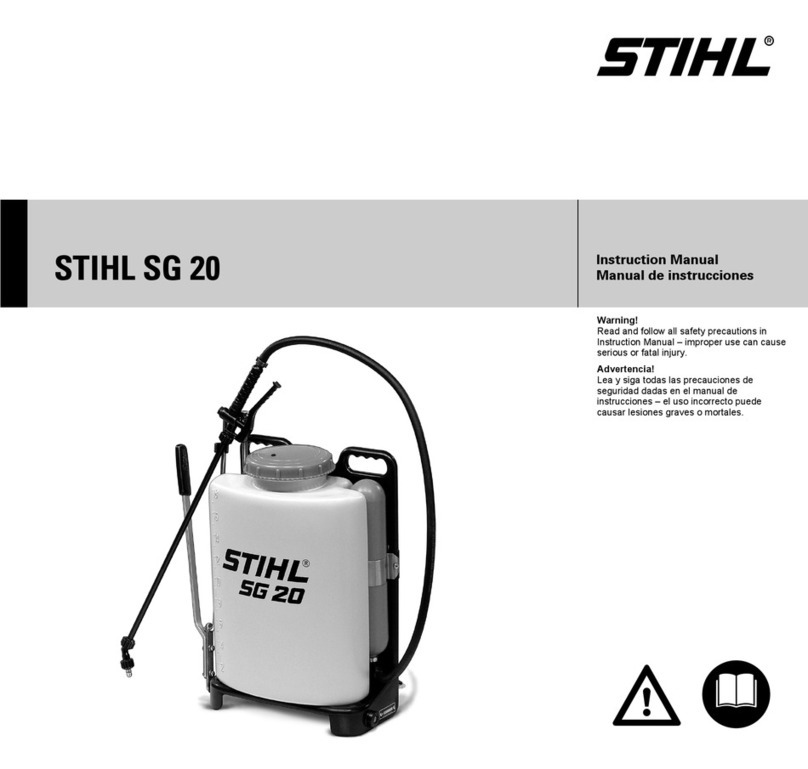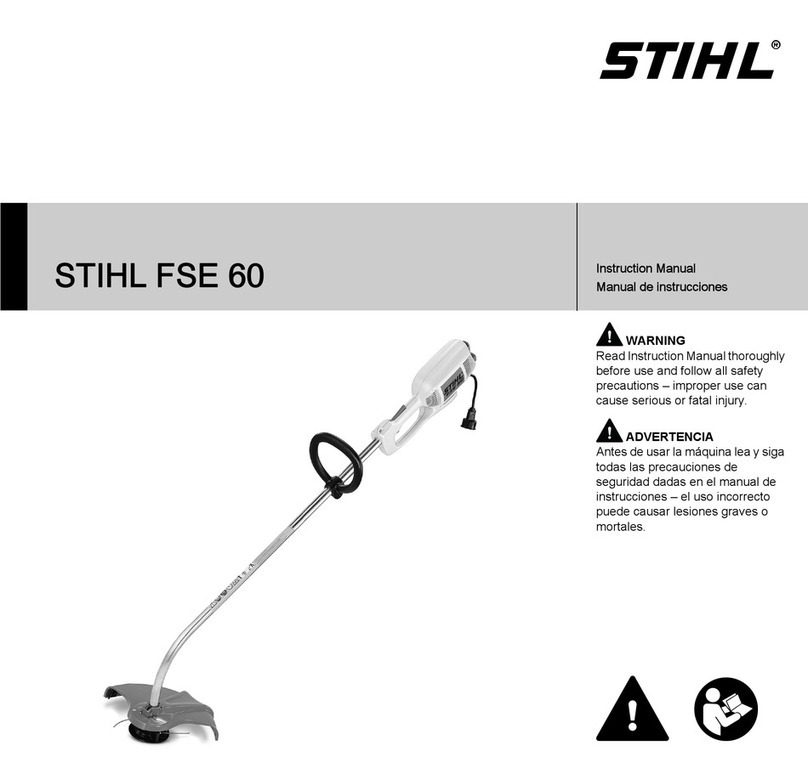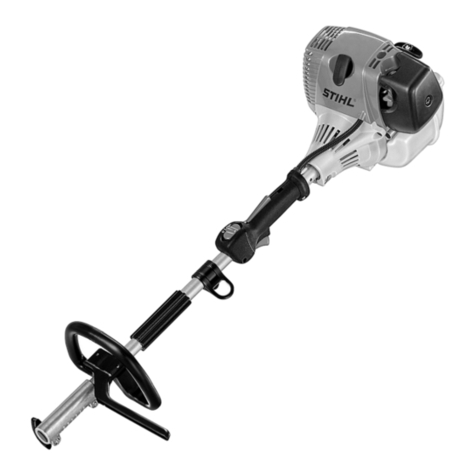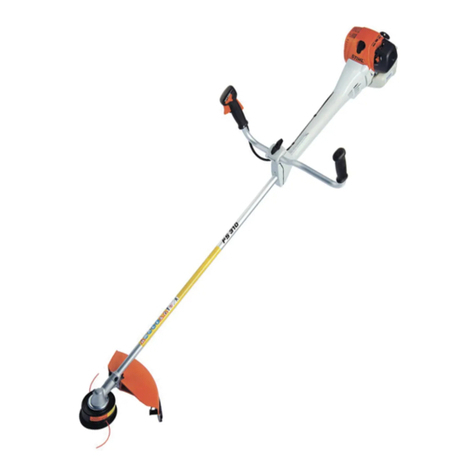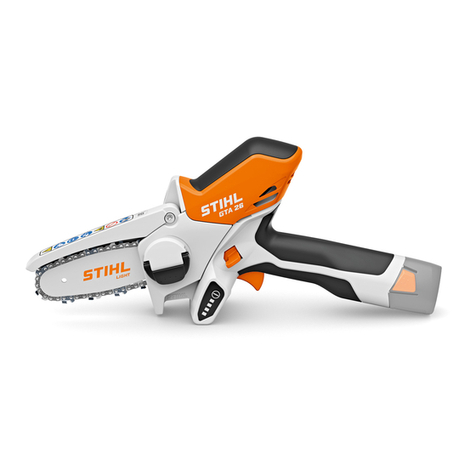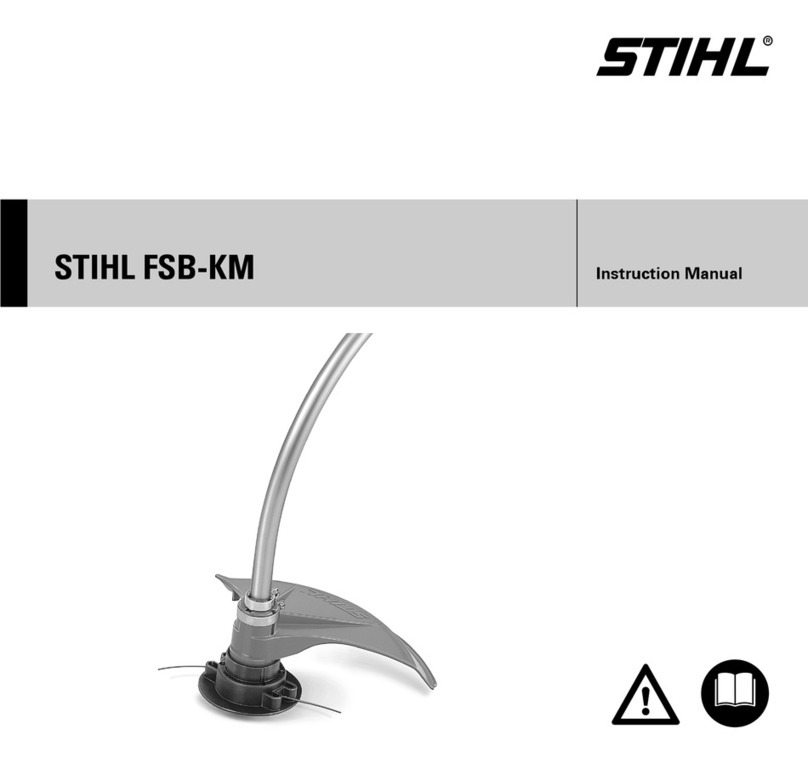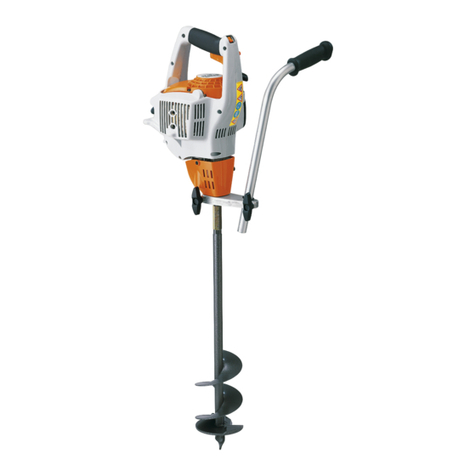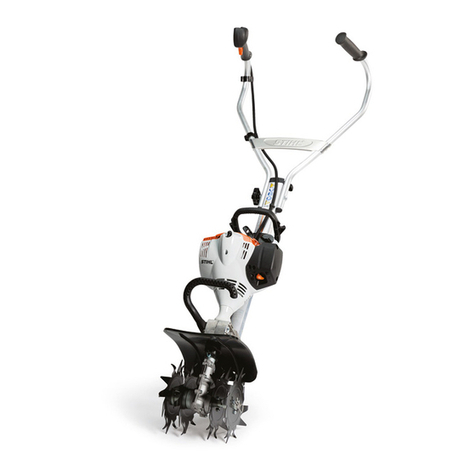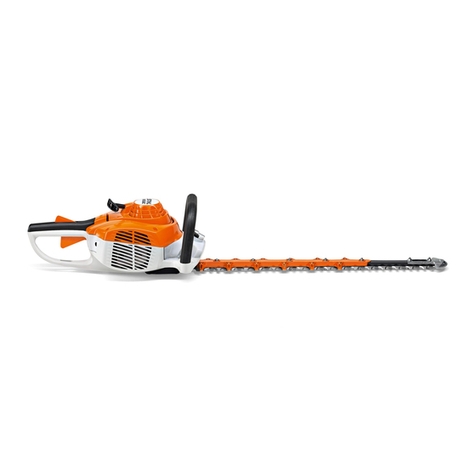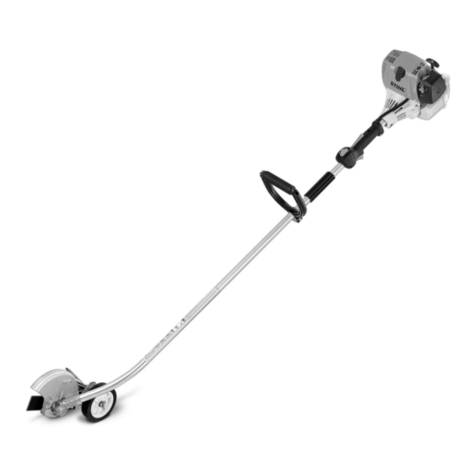
The user is responsible for accidents or risks
involving third parties or their property.
Do not lend or rent your power tool without the
User Manual. Be sure that anyone using it under‐
stands the information contained in this manual.
The use of machines that emit noise may be limi‐
ted to certain hours of the day as specified by
national and/or regional or local regulations.
Anyone operating the machine must be well res‐
ted, in good physical health and in good mental
condition.
If you have any condition that might be aggrava‐
ted by strenuous work, check with your doctor
before operating a machine.
If you have a pacemaker: The ignition system of
your machine produces an electromagnetic field
of very low intensity. This field may interfere with
some pacemakers. STIHL recommends that per‐
sons with pacemakers consult their physician
and the pacemaker manufacturer to reduce any
health risk.
Anyone who has consumed alcohol or drugs or
medicines affecting their ability to react must not
operate a power tool.
Use your power tool only for drilling holes in soil,
ice and wood – depending on the drilling tool
mounted. Select the drill axis so that the lever of
the drill brake can be supported on the thigh of
the operator at any time during drilling.
It must not be used for any other purposes.
Before drilling, make sure that there are no lines
(e. g. for gas, water, electricity) at the drilling
sites:
–Obtain information from the local utility compa‐
nies
–If in doubt, check the existence of lines with
detectors or test excavations
Only use augers or accessories which have been
approved by STIHL for this machine or which are
technically equivalent. If you have any questions
in this respect, consult your dealer. Use only high
quality parts and accessories. in order to avoid
the risk of accidents and damage to the machine.
STIHL recommends the use of original STIHL
tools and accessories. They are specifically
designed to match the product and meet your
performance requirements.
Never attempt to modify your power tool in any
way since this may increase the risk of personal
injury. STIHL excludes all liability for personal
injury and damage to property caused while
using unauthorized attachments.
Do not use a high-pressure washer to clean the
power tool. The solid jet of water may damage
parts of the unit.
2.1 Clothing and equipment
Wear proper protective clothing and equipment.
Clothing must be sturdy but allow
complete freedom of movement.
Wear close-fitting clothes such as a
boiler suit, not a loose jacket.
Do not wear clothing which could become trap‐
ped in wood, brush or moving parts of the
machine. Do not wear a scarf, necktie or jewelry.
Tie up and confine long hair above
your shoulders.
Wear sturdy shoes with non-slip
soles.
WARNING
To reduce the risk of eye injuries,
wear close-fitting safety glasses in
accordance with European Standard
EN 166. Make sure the safety
glasses are a snug fit.
Wear hearing protection, e.g. ear defenders.
Wear a safety hard hat where there is a danger
of head injuries from falling objects.
Wear sturdy protective gloves made
of a resistant material (e. g. leather).
STIHL can supply a comprehensive range of per‐
sonal protective equipment.
2.2 Transporting the machine
Always stop the engine.
Remove the auger before transporting the power
tool long distances. To reduce the risk of burn
injury, carry the unit by the handle frame with hot
parts of the machine (e.g. gearbox) away from
your body.
By vehicle: When transporting in a vehicle, prop‐
erly secure your machine to prevent turnover,
damage and fuel spillage.
2 Safety Precautions and Working Techniques English
0458-529-8321-B 3













